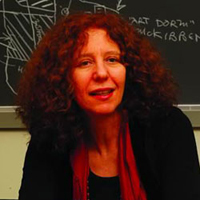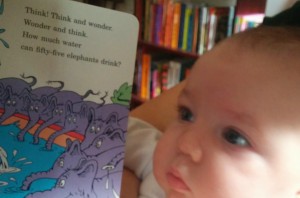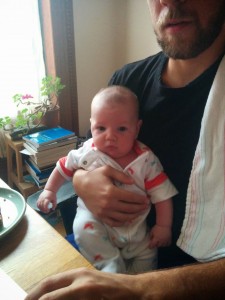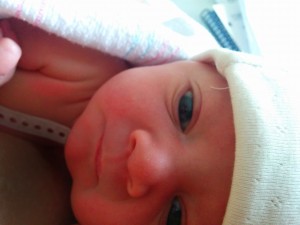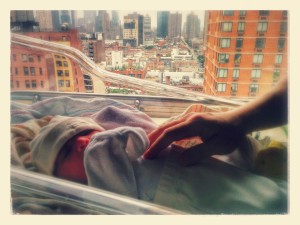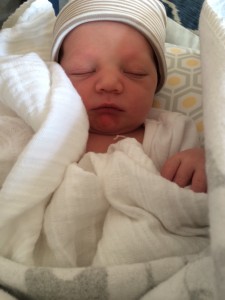When I first read the Times summary of the VOICE study I was overtaken by a feeling of unease. Reading the actual report in the New England Journal of Medicine (NEJM) did little to assuage these feelings. In her recent Oped, published in Al Jazeera America, Susser succinctly explains what the Times and the VOICE researchers got wrong and shows how future studies can avoid these errors.
All posts by kreniske

Who is the Audience?
Who is the Audience? was written for a Baruch blog called Cacophony. I think I have a pretty good sense of who my audience is here – (Mom!) – just kidding – but also not. Along with a handful of friends, my family and a bunch of webbots – I like to imagine some people interested in writing or APA style or whatever political issue stumble upon this page occasionally. Anyway below is the post – and feel free to respond on the audience tip!
Earlier this semester a friend confided in me that he was having trouble writing, and I callously guffawed, “It’s just a blog post”. How those words haunt me now. I have experienced an inordinate amount of consternation, conflict and ultimately exasperation in my previous three attempts to compose this post. Each time I wrote about a page, and then decided that I couldn’t, wouldn’t or shouldn’t publish it on Cacophony. I felt like I was sinking into intellectual quicksand, the more I struggled, the deeper I sunk into a certainty that the writing I had spent an embarrassing amount of time on – literally hours – was for naught. As I sank lower and lower into the mire I began to ponder the thoughts and emotions that I felt were stopping me from blogging. I had set out to write a quick post about my research on blogging and I felt as thought the very concepts that inspired me to conduct my research were the same forces that were making it difficult to write about this research. Who was my audience? Ironically, it seemed I couldn’t blog about my dissertation on blogging. In brief, my research is about how the medium in which students compose expressive writing – on a blog as compared to in MS Word – interacts with their cognitive and emotional processes and the way they write, and I am subsequently exploring how these differences can be measured and ultimately I’m making an argument for why these differences matter. But back to my struggles.
First I attempted to write about my preliminary results.
What I’m noticing is that over time the participants are using more evaluative language – meaning they were investing more meaning and effort into their work. I closed my eyes and took a deep breath poised to compose the next sentence. All of a sudden I was in front of my dissertation committee, a stern silverback professor hand on chin in the thinker pose questioned, “But in that blog post you wrote, you stated that evaluative devices would increase and now it seems that is not the case. Can you explain this?”

I woke sweat drenched in a dark room, a red streak where my face had pressed against the keyboard. No, no, I decided I certainly couldn’t blog about my preliminary results.
Well, I thought, what if I write about my coding schema.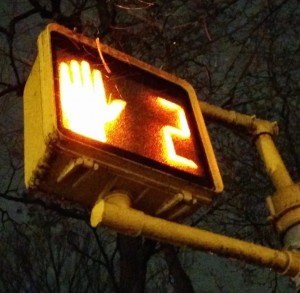
That seemed like a safe idea. I’d even begun describing it in cursory terms in my never to be published preliminary results. I again began banging away at the keyboard, this time describing the syntagmatic narrative-coding schema. But how could I describe this coding schema in a way that seemed relevant and meaningful to an audience not from my mini-niche discipline? How could I convince readers that the system I had spent hours fine-tuning with my adviser and research assistants was meaningful and worthwhile? Should I cite numerous theoretical and research articles in my blog post? If so, should I use APA, MLA or Chicago style and if Chicago would this be Chicago I or II? Even these questions seemed like they would bore readers to sleep. Furthermore, wouldn’t readers want to know at least what my preliminary results of this schema were? And I was still collecting data – what if some of my participants happened upon this post and then changed the way they were writing? No, oh no, I thought, this post on my coding schema would not do. Let me try something new.
Finally, I thought let me describe my methods.
Ah yes, I can just use some of what I’ve already written in my proposal and this will come easily. But of course it didn’t. The excerpts from my proposal were too dense and psychology specific. I decided to rewrite the methods with more accessible language. When I was nearly finished I realized what I had written was in fact better than my proposal and therefore could serve well as at least part of the method section for my final dissertation draft. And if I wanted to use it for my dissertation draft or perhaps for future publications than I had best not web-publish it. Why not a reader might wonder? As a psychology PhD candidate I’ve though a lot about whether to digitally publish my dissertation. What’s pushed me towards a traditional paper dissertation is the American Psychological Association guidelines, and subsequently any APA journals, that state a manuscript should not be more than 30% similar to work that is previously published. Without getting too far into the gritty details if I blogged my methods section it would make it difficult to use similar wording for future publications.
I’ve used this post to work through and make sense of my thoughts and emotions.
After writing about these fits and starts my audiences seem much less intimidating than when they were bottled up in my mind. In truth, unless I send them the link I don’t think my professors nor my participants will read this piece – and even then… Nor is it likely that whatever I wrote about my coding schema or methods would be identical to what I will write for future journal articles. One question is – does it matter that in “real life” these scenarios were unrealistic? In real life, I was wrestling with these thoughts and they were enough stop me from being able to or at least made me feel as though I couldn’t blog – which is sort of the same thing in the end. The power of these imagined audiences was literally paralyzing. Perhaps too, I was struggling to write about my dissertation because this work is so important to me, and I have yet to figure out how to distill the main points into a concise and accessible blog post. The struggle described in this post has likely moved me closer to being able to do just that.
There is also something very real about imagined audiences. And the commonality between my three false starts was my struggles with these audiences and the very real – though perhaps difficult to exactly define – audience of Cacophony readers. I was struggling to imagine Cacophony’s audience and therefore I was having trouble framing my argument in concise and accessible language. And what do those words really mean? Concise and accessible to whom? Business faculty, communications specialists (I’m not even sure what that means), psychologists, educators, linguists? I should admit I’m new to Cacophony this semester and though I did browse through some previous posts – it was by no means an exhaustive search – so maybe this has been answered. And maybe I’m feeling a bit of what Sarah Ruth Jacobs described on this blog in 2011 as The Academic Crisis of Audience. But enough caveats here’s my question to you reader: who is the audience for this blog?
“Think! Think and wonder.
Wonder and think”.
My First First Author Peer Reviewed Paper!
My first first author peer reviewed paper was just published in the Journal of Interactive Technology and Pedagogy (JITP) with most of the photography by Jesse Kipp!
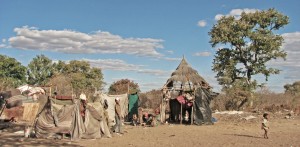
Here’s the abstract and a link to the full paper:
The term San refers to the indigenous people of southern Africa, who for thousands of years lived a nomadic lifestyle, hunting and gathering for subsistence. Some contemporary San still subsist partially on food gathered from the bush. Many others have been pushed from their traditional lands and lifestyles and now struggle to subsist earning low wages in rural areas on the edges of cattle farms or urban areas working in factories and living on the fringes of informal settlements. In the past decade the San have begun to use new digital tools to 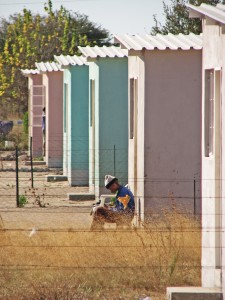 document, communicate, and represent their values and struggles. This article focuses on how San people used digital technologies to generate educational texts by transcribing and web publishing traditional oral folktales and to inject their own perspectives into critical political debates. In each of these cases digital media enabled San people to realize explicit and implicit social and political agendas that were realized through the use of digital media. This paper focuses on select digital representations of San people by San people and explores how these examples relate to larger issues of education and globalization in the region.
document, communicate, and represent their values and struggles. This article focuses on how San people used digital technologies to generate educational texts by transcribing and web publishing traditional oral folktales and to inject their own perspectives into critical political debates. In each of these cases digital media enabled San people to realize explicit and implicit social and political agendas that were realized through the use of digital media. This paper focuses on select digital representations of San people by San people and explores how these examples relate to larger issues of education and globalization in the region.
I especially want to thank Richard Lee and Megan Biesele for their support in the field and their comments on the manuscript. And also my wife Sandy for being so supportive and  caring while I worked on the final revisions just weeks after little bear joined us! And thank you little bear for loving your bouncy (most of the time) while I made the revisions too!
caring while I worked on the final revisions just weeks after little bear joined us! And thank you little bear for loving your bouncy (most of the time) while I made the revisions too!
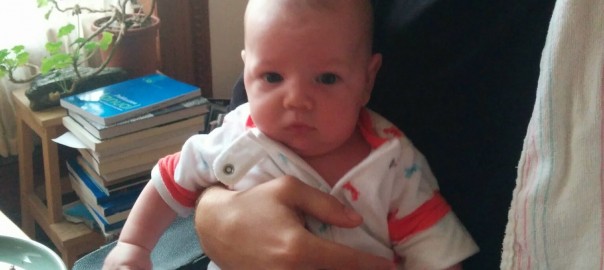
Quick Comment on De Blasio’s Plan for NYC’s Troubled Schools
Last week the Times summarized De Blasio’s plan for NYC’s troubled schools:
“The new program will designate 94 of the city’s most troubled schools, including the Coalition School, as Renewal Schools based on a list of criteria including low four-year graduation rates for high schools and poor test scores for middle and elementary schools. Students at those schools will receive an extra hour of instructional time each day, teachers will have extra professional training, and the schools will be encouraged to offer summer school. The schools will also be given additional resources, with $150 million spread over two years, about $39 million for this school year and $111 million in the next.
But the centerpiece of the proposal involves turning these institutions into so-called Community Schools, which try to address the challenges students face outside the classroom, with offerings like mental health services for those who need them or food for students who do not get enough to eat at home”.
I engaged in the following exchange in the comment sections of the piece:
Richard (a commenter) wrote:
“Without active parent participation at home and in schools, DeBlasio plan is doomed”.
I responded:
“I agree that parent participation is important. Creating community schools is a step in that direction especially “with offerings like mental health services for those who need them or food for students who do not get enough to eat at home”. Offering these services to parents and guardians too might be one way to increase involvement.
In my experiences teaching public school I noticed that our weekly food pantry encouraged parents to come to the school and made them feel welcome.
It’s a two way street, if schools – especially in low income neighborhoods – do more to support and welcome parents we’ll likely see a reciprocal increase in parent support and involvement in school affairs”.
And another commenter, Sophiequus, added:
“I recall by brother-in-law, a district superintendent in update NY, saying “We just have them 7 hours a day. There’s a limit to what we can do.” If schools are going to become social service delivery vehicles, the school day will need to be extended far beyond an hour.
As a parent of school children, I feel certain nothing can replace a parent in the home who actively supports education, requires/ensures their children attend school on time, complete assignments, and seek out extra help when needed. If you don’t have the parent on the school’s side, I’m not sure how to help children succeed without more extreme solutions”.
I wanted to write a more detailed post on this, but as a new parent myself, I found it challenging to make time to even do this much!
Making Sense of the Transition to College
repost from cac.ophony.org:

Making Sense of the Transition to College
Perhaps not surprisingly, it really matters what we ask students to write. As instructors, and support staff, one way we can help students with the transition to college is to encourage or even demand that students respond to specific prompts that focus their writing and subsequent thoughts on their transition experiences. A rough comparison of FRO 1000 and the SEEK Freshman Seminar blogs shows how different prompts supported students in different sense making processes. As Toby Fulwiler points out in a foundational WAC text, “writing makes thoughts visible and concrete and allows us to interact with and modify them” (1983). It is this process of making thoughts visible and interacting with them that sense making happens.
As instructors we can use writing prompts to direct students to work through specific thoughts and challenges like the transition to college. For example, the Freshman Seminar directed students to interact with the following prompt:
Create a two-minute video, an eight-image slideshow, or a ten song musical playlist that represents who you think you are to your classmates. Embed your creation in a blog post and then write a post of no more than 500 words that explains how what you’ve created speaks to who you are.
The prompt encouraged students to reflect on the self, and the student responses – again not surprisingly – did just that. They worked through questions like “who am I” and “how do these songs or slides represent me”.
The first few sentences from one post convey a sentiment that a number of students’ communicated:
When initially given this assignment, I thought creating a blog post about myself would be easy. Though I was not necessarily happy about it, I thought it would not be a problem because, generally speaking, I like to believe that I have a decent grasp of who I am as an individual. However, as I sat down to select pictures and craft my slide show, I realized just how difficult it is to effectively convey who I am as an individual in only eight images.
In this excerpt the student articulated the struggles and the process of making sense that many of her peers engaged in as they composed written and pictorial representations of themselves. After the above introduction the student wrote about moving from Florida to New Jersey and “the impact this change had” on her life. Her final paragraph included a quote from Vonnegut and her explanation of the purpose of the quote:
I want to stand as close to the edge as I can without going over. Out on the edge you see all kinds of things you can’t see from the center.” I included this because it accurately describes how I aspire to live my life — taking risks and engaging in new experiences, in order to continue to flourish as an individual.
The first FRO 1000 prompted students to look inward and make sense of their self and then present a narrative about themselves outward in concrete and visible text on their FRO 1000 blogs. It created an exercise of literally constructing a representation of self in Baruch’s digital space.
In contrast the prompt that the SEEK Freshman responded to directed them to reflect on the relationships they were developing in their first weeks at Baruch:
I invite you to tell a story about your first week of the fall semester at Baruch College. Research has shown that during the first semester students often worry about whether or not professors and other students at their college will accept them, and how eventually students become comfortable there and find a family of people with whom they are close and feel they belong. Please describe how you have experienced your first week of the fall semester at Baruch College…
The prompt was adapted from a Walton and Cohen (2011) article published in Science that showed how writing about the transition to college helped freshman make the transition to college and subsequently improve their graduation rates and overall GPAs. In this excerpt from his first post Almightybrou (a pseudonym) reflected on his experience meeting new people at Baruch:
After we went to the library, we were just standing in the lobby with other people in our class and we were all just having light conversations about our common interest, such as sports and intended majors. This was the case in most of our classes since the main concentration of all the professors was to have us do ice breakers. This helped us get familiar with each other and made conversations that much more easier. For me it was both an interesting and exciting week for me. Even though it has been such a short amount of time, i feel that it will only get better as we get used to the people we are around.
Almightybrou used this post to make sense of his relationships with the other students in his cohort. Writing about this experience was an opportunity for Almightybrou to interact with and make the experience visible and concrete.
A quick comparison of the FRO 1000 and the SEEK freshman posts provides a window into how different prompts direct students to write and subsequently make sense of themselves and their college context in distinct ways. The FRO 1000 prompt asked what – “represents who you think you are to your classmates” – directing students to make sense of their self. While the SEEK prompt directed students to think about their relationships with others and in light these relationships asked the students to reflect on how have they experienced their first week at Baruch? The differences in the prompts and subsequent student responses call attention to the ways that writing functions as a critical tool for making sense of the transition to college.
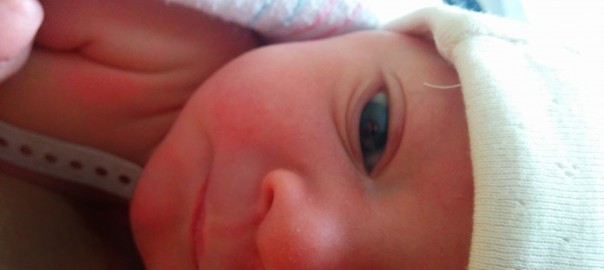
Announcing Solomon Bear Mervyn Kreniske
Announcing Solomon Bear Mervyn Kreniske
I am so happy to share the news about the littlest Kreniske.
After a long and arduous journey, Solomon Bear Mervyn entered this world on 9.12.14, weighing in at 7.0 lbs and measuring 21.25 cm. He is the sweetest little bean and we are in awe of him – it’s an event even to see him open his eyes!
The three of us came home happy and healthy saturday night.
cheers!
phil, sandy and sol
